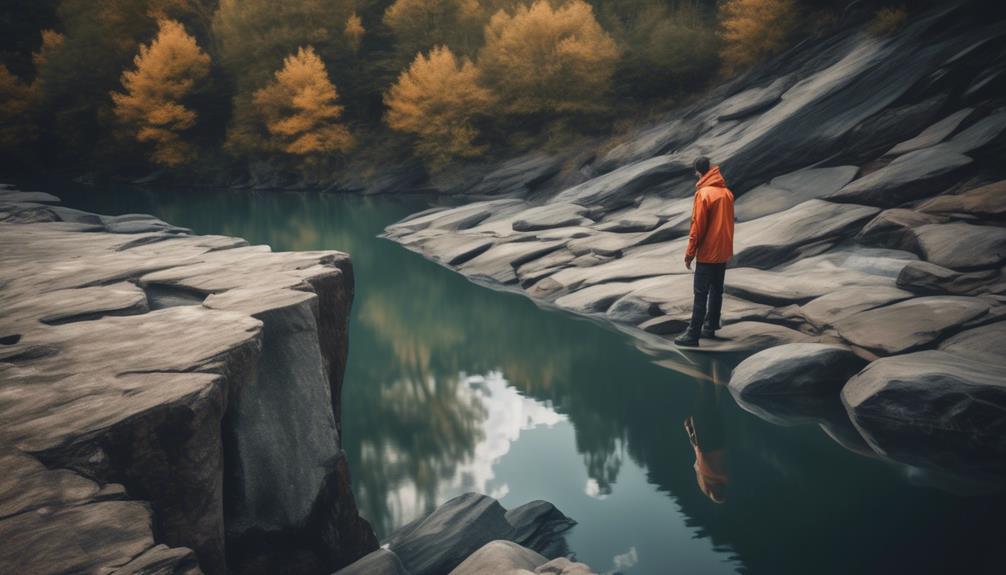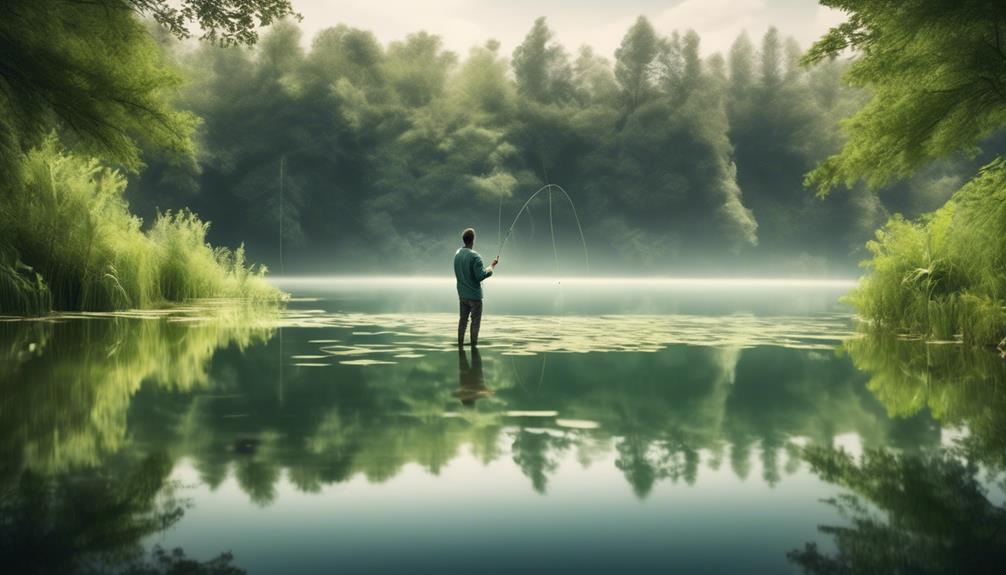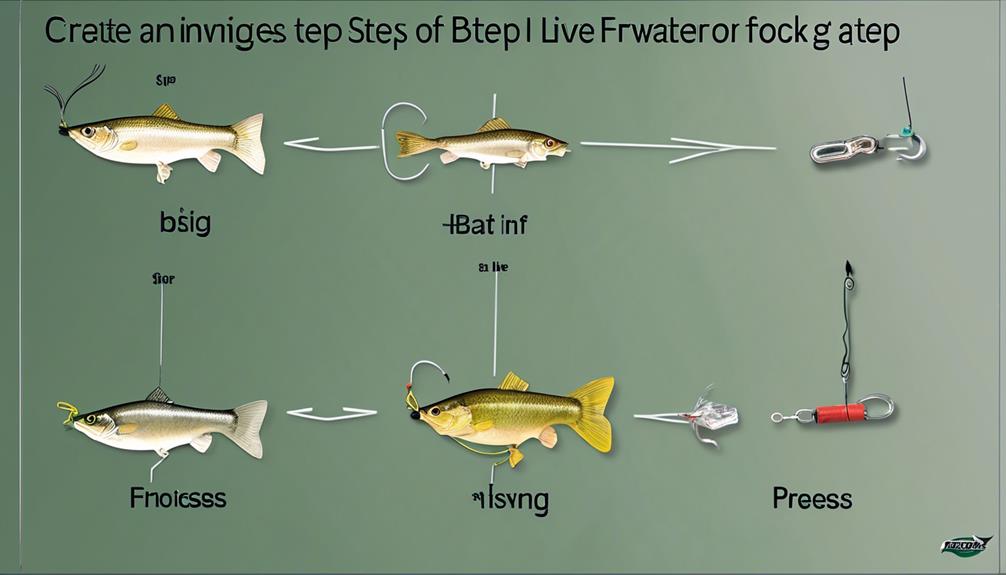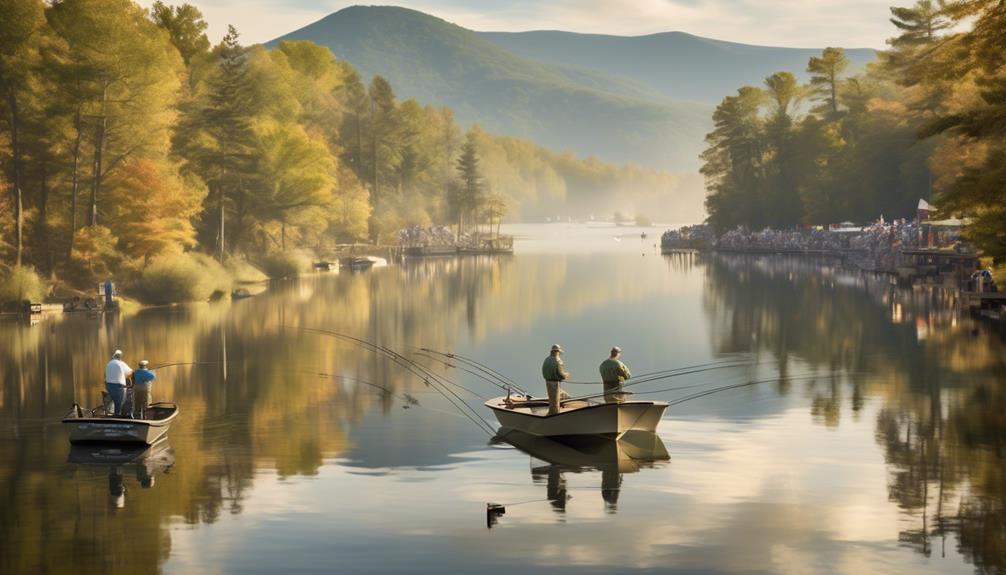When it comes to freshwater fishing, navigating the waters of potential hazards is akin to charting a course through uncharted territory.
As an angler, the tranquility of a serene lake or winding river may lure you in, but beneath the surface lies a myriad of dangers that can disrupt your peaceful outing.
From unsuspecting waterborne threats to the perils of adverse weather conditions, equipping yourself with the knowledge of freshwater fishing hazards is not just prudent, but essential for ensuring your safety and the success of your angling adventures.
Understanding Common Freshwater Fishing Risks
Before you head out for your next freshwater fishing trip, it's important to understand the common risks you may encounter. Safety measures are crucial when it comes to freshwater fishing. One of the key risk assessment factors is the potential for weather changes. Sudden storms can arise, leading to rough waters and increased danger. Keeping an eye on the weather forecast and being prepared with appropriate gear and shelter can mitigate this risk.
Another risk to consider is the presence of wildlife, such as snakes or bears, especially in more remote fishing locations. Being aware of your surroundings and taking necessary precautions, like wearing appropriate clothing and making noise to alert wildlife of your presence, can help minimize encounters and potential conflicts.
Furthermore, the terrain around freshwater bodies can be uneven and slippery, increasing the risk of falls and injuries. It's important to wear appropriate footwear with good traction and to exercise caution when moving around the fishing area. Additionally, being mindful of potential underwater obstacles and strong currents is essential for personal safety.
Risk assessment also includes being prepared for medical emergencies. Carrying a first aid kit and knowing basic first aid procedures can be vital in addressing any injuries or health issues that may arise during a fishing trip.
Understanding these common risks allows you to take proactive safety measures, ensuring a more enjoyable and secure freshwater fishing experience.
Identifying Potential Waterborne Dangers
Watch out for potential waterborne dangers while freshwater fishing, as they can pose significant risks to your safety. Being aware of these potential hazards is crucial for a safe and enjoyable fishing experience. Here are the key points to consider:
- Recognizing hidden dangers: It's essential to be mindful of unseen hazards such as submerged rocks, tree branches, and other debris that can cause entanglement or even capsizing of your watercraft. Always scout the area and proceed with caution to avoid these potential dangers.
- Water safety: Understanding the water conditions and potential risks specific to the freshwater body you're fishing in is imperative. Factors such as strong currents, sudden depth changes, and underwater obstructions can all present hazards that need to be identified and navigated carefully.
- Weather awareness: Keep an eye on weather forecasts and be prepared for sudden changes in weather conditions. Sudden storms can lead to choppy waters, increased wind speeds, and decreased visibility, all of which can significantly impact your safety while on the water.
- Wildlife encounters: Freshwater bodies are home to various wildlife, including potentially dangerous creatures like snakes and alligators. Being able to recognize the signs of wildlife presence and knowing how to react in such encounters is essential for your safety.
Recognizing Environmental Hazards in Freshwater
Be mindful of potential environmental hazards while freshwater fishing to ensure a safe and enjoyable experience on the water.
It's important to be aware of pollution sources and habitat destruction to protect both yourself and the ecosystem. Identifying pollution sources in freshwater environments is crucial for understanding potential hazards. Keep an eye out for signs of pollution such as oil slicks, excessive algal blooms, or unusual odors which could indicate chemical contamination.
Additionally, be cautious around industrial areas, agricultural runoff, and sewage outlets as these can introduce harmful substances into the water. Recognizing habitat destruction is also essential for minimizing environmental hazards. Look for signs of erosion, sedimentation, or invasive species that can disrupt the natural balance of the ecosystem.
Avoid disturbing sensitive habitats such as spawning areas or submerged vegetation to protect the fish population and preserve the natural environment. By being proactive in identifying pollution sources and recognizing habitat destruction, you can contribute to the conservation of freshwater ecosystems while ensuring a safe and sustainable fishing experience.
Safety Precautions for Handling Fishing Equipment
When handling fishing equipment, always ensure that hooks are securely fastened and lures are properly attached to prevent accidental injuries. Proper storage and maintenance of equipment are essential for your safety. Here are four crucial safety precautions for handling fishing equipment:
- Proper storage: Store your fishing equipment in a secure location, away from children and pets. Keep hooks, lures, and sharp objects in tackle boxes or containers with secure lids to prevent accidental injuries. Additionally, store fishing rods in a vertical position to avoid bending or damage.
- Regular maintenance: Inspect your fishing equipment regularly for signs of wear and tear. Check the condition of your fishing line, reels, and rods to ensure they're in good working order. Replace any damaged or worn-out equipment to prevent malfunctions during your fishing trips.
- Safe handling: When carrying fishing equipment, be mindful of hooks and sharp objects. Use protective caps or covers for hooks when not in use. Always handle rods and other equipment with care to avoid accidental injuries to yourself or others.
- Proper disposal: Dispose of old fishing lines, hooks, and other equipment responsibly. Cut fishing lines into small pieces before disposing of them to prevent harm to wildlife. Recycle or properly discard any old or damaged fishing equipment to keep the environment clean and safe for everyone.
Dealing With Adverse Weather Conditions
As you prepare to cast your line despite the potential for adverse weather conditions, it's important to consider how to stay safe and maintain your equipment. When facing adverse weather, safety measures should be a top priority.
Firstly, always check the weather forecast before heading out. This will help you prepare for any upcoming changes and decide if it's safe to proceed with your fishing trip. Additionally, it's crucial to invest in high-quality rain gear and clothing suitable for the conditions. Waterproof jackets, pants, and boots can help keep you dry and comfortable, reducing the risk of hypothermia or other weather-related illnesses.
Preparation tips are essential for dealing with adverse weather. Make sure to pack extra layers of clothing, including gloves and a hat, to stay warm in case the temperature drops. It's also wise to bring along a first aid kit and emergency supplies such as a space blanket, flashlight, and extra food and water.
Furthermore, securing your fishing equipment is crucial. Store your gear in waterproof containers or bags to prevent damage from rain or snow. Always carry a reliable waterproof container for your electronic devices, such as your phone or GPS, to avoid water damage.
Managing Risks Associated With Aquatic Fauna
As you navigate freshwater fishing areas, be vigilant and aware of potential risks from aquatic wildlife for a safe and enjoyable angling experience. Aquatic life encounters can add excitement to your fishing trip, but it's important to manage the associated risks. Here are some safety protocols to help you stay safe when interacting with aquatic fauna:
- Educate Yourself: Take the time to learn about the aquatic species in the area where you plan to fish. Understanding their behavior and habitat can help you avoid potential encounters and know how to react if one occurs.
- Respect Wildlife: Maintain a respectful distance from aquatic wildlife and avoid interfering with their natural behaviors. This not only ensures your safety but also protects the animals and their environment.
- Use Protective Gear: When fishing in areas known for certain aquatic species, such as snapping turtles or venomous snakes, consider using protective gear like gloves or boots to minimize the risk of accidental encounters.
- Be Prepared: Carry a basic first-aid kit that includes items for treating minor wounds or stings. Knowing how to respond to potential encounters with aquatic fauna can help you address any incidents promptly and effectively.
Responding to Emergencies on Freshwater Fishing Trips
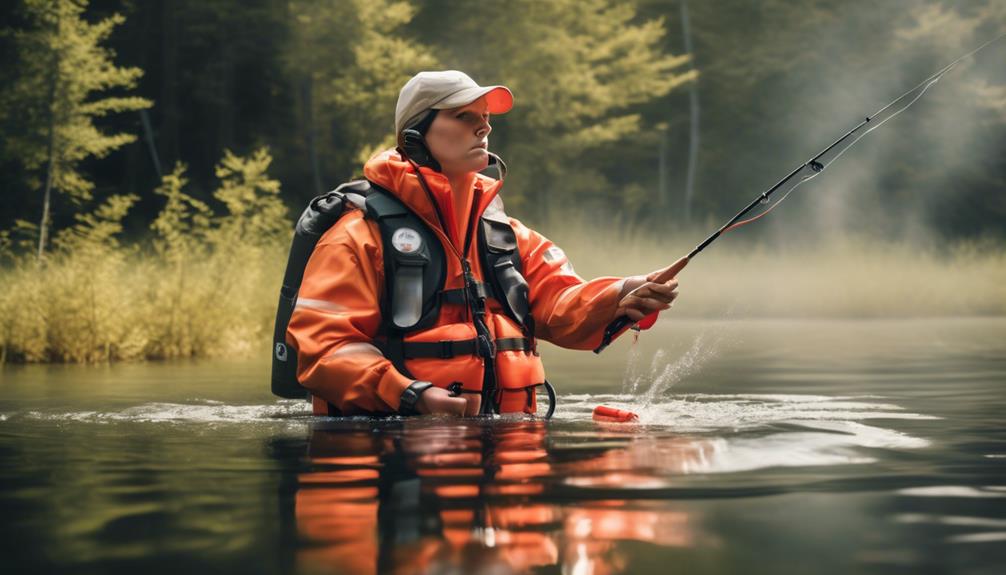
To ensure a safe and enjoyable angling experience, it's crucial to be prepared to respond to emergencies that may arise while interacting with aquatic fauna during freshwater fishing trips. One of the most important aspects of being prepared for emergencies is having basic knowledge of first aid. In the event of an injury from a fish hook, a fish spine, or any other mishap, knowing how to administer first aid can make a significant difference. It's essential to have a first aid kit readily available and to know how to use its contents effectively.
In addition to first aid, having a plan for emergency response is vital. This includes knowing how to handle situations such as accidental submersion, cuts or injuries from fishing equipment, or encountering dangerous wildlife. It's crucial to have a clear understanding of whom to contact in case of an emergency and to have a means of communication readily available. Having a fully charged cell phone or a backup communication device can be invaluable in urgent situations.
Furthermore, being prepared for emergencies means understanding the specific risks associated with the freshwater environment you'll be fishing in. Different bodies of water may present varying hazards, and having knowledge of these potential dangers can help you be proactive in preventing emergencies.
Ultimately, being equipped with the skills and resources for first aid and emergency response can significantly enhance your safety and that of your fellow anglers during freshwater fishing trips.
Promoting Responsible Practices to Minimize Hazards
Promote responsible practices to minimize hazards by adhering to local fishing regulations and environmental conservation guidelines. By doing so, you not only enhance the safety of your freshwater fishing trips but also contribute to the preservation of natural ecosystems.
Here are four key ways to promote responsible practices and minimize hazards:
- Adhere to Fishing Regulations:
Follow local fishing regulations regarding catch limits, size restrictions, and protected species. By respecting these rules, you help maintain the balance of freshwater ecosystems and prevent overfishing, which can disrupt natural habitats.
- Practice Catch and Release:
Consider catch and release practices to conserve fish populations. When done responsibly, catch and release can help sustain healthy fish stocks and ensure the longevity of fishing opportunities for future generations.
- Dispose of Waste Properly:
Prevent pollution by properly disposing of fishing line, hooks, and other waste. Lost or discarded fishing gear can pose serious hazards to wildlife and contribute to water pollution. Carry a small bag to collect and dispose of any waste appropriately.
- Support Conservation Efforts:
Get involved in local conservation initiatives and support organizations dedicated to preserving freshwater habitats. By promoting conservation and actively participating in conservation efforts, you can contribute to the long-term health and sustainability of freshwater ecosystems.
Frequently Asked Questions
What Are the Best Safety Measures to Take When Fishing in Areas With Heavy Boat Traffic?
When fishing in areas with heavy boat traffic, always wear a life jacket for safety. Apply sunscreen to protect against dehydration from the sun. Stay alert and be mindful of boat movements to ensure a safe fishing experience.
How Can I Prevent and Treat Insect Bites and Stings While Freshwater Fishing?
To prevent and treat insect bites and stings while freshwater fishing, apply insect repellent before heading out, wear long sleeves and pants, and carry antihistamine and hydrocortisone cream to treat any bites or stings. Preventing sunburn and treating minor cuts are also important.
Are There Any Specific Safety Precautions to Take When Fishing in Areas With Potential for Toxic Algae Blooms?
When fishing in areas with potential for toxic algae blooms, it's crucial to take safety precautions. Be aware of water contamination from these blooms, as they can pose serious health risks. Always stay informed and cautious.
What Should I Do if I Encounter a Wild Animal While Fishing in a Remote Freshwater Area?
If you encounter a wild animal while fishing in a remote freshwater area, stay calm and slowly back away. Avoid sudden movements and never turn your back on the animal. Carry bear spray or a whistle for safety.
What Are the Potential Hazards of Handling Fishing Equipment in Extreme Temperatures, and How Can I Mitigate These Risks?
When handling fishing equipment in extreme temperatures, it's important to be aware of the potential heat risks. Stay hydrated, wear light clothing, take frequent breaks, and seek shade to mitigate these risks.
Conclusion
So, now you know the importance of learning about freshwater fishing hazards.
By understanding the risks, identifying potential dangers, and taking safety precautions, you can enjoy your fishing trips with confidence.
Remember to always be prepared for adverse weather conditions and be aware of the wildlife around you.
By promoting responsible practices, you can minimize hazards and ensure a safe and enjoyable fishing experience for yourself and others.
